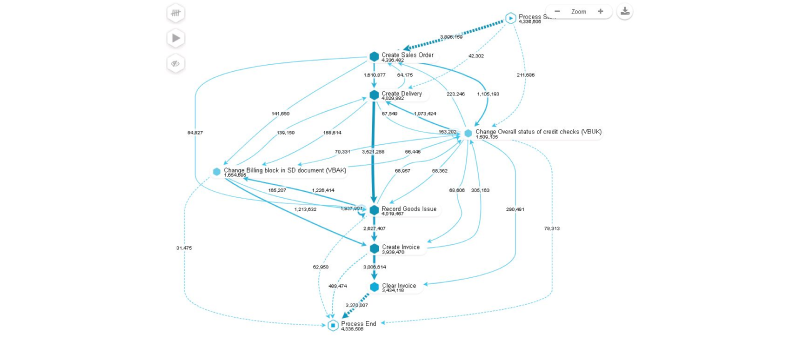Building AI Applications - Learnings over the past year
Our team at AuxoAI has been deep in building enterprise AI applications for the last twelve months. They span across various functions and here are our key learnings.

Key Learnings
- Integration Challenges
- User Adoption Patterns
- Performance Optimization
- Security Considerations
- Process Automation and AI-Native Workflows
Process Automation Evolution
Celonis popularized the concept of 'happy path' - essentially how a process (and the software) is supposed to work. In reality, the processes look something like the picture below. It is all over the place with lots of exceptions.

Most of the steps in the less happy path are a result of policy guardrails that require manual research and summarization or upstream data quality issues. This intermediate research step creates bottlenecks and results in a lot of non-value-added work in the enterprise.
The Promise of GenAI in Workflow Optimization
The promise of GenAI models is that eventually we will see more AI-enabled workflows that: a) Automate the research step more effectively than traditional RPA bots b) Suggest the right guardrails and calibrate the system performance c) Nudge to correct the upstream data challenges
For instance, in creating a sales order, there is a guardrail of credit checks in certain instances which creates friction in the process and needs manual research and intervention.
AI-Native Approaches
Alternatively, and this is where things get more interesting - you can think of the process itself as dynamic/adaptive. The workflow is in fact a series of decisions, and depending on the type of customer or order, you will take different paths that optimize for process outcome metrics. Not all orders should need the standard sales order generation process. Maybe there is a 'click to buy' equivalent of Amazon's buying experience for certain types of orders or customers. The probabilistic approach to process execution will be the foundation of a new breed of AI-native software.
Implementation Challenges
Every enterprise software company is going to incorporate these models in the workflow, but the challenge will be how to think about AI-enabled vs AI-native approaches, what is easier for enterprises to adopt, and what is the willingness to pay for it.
